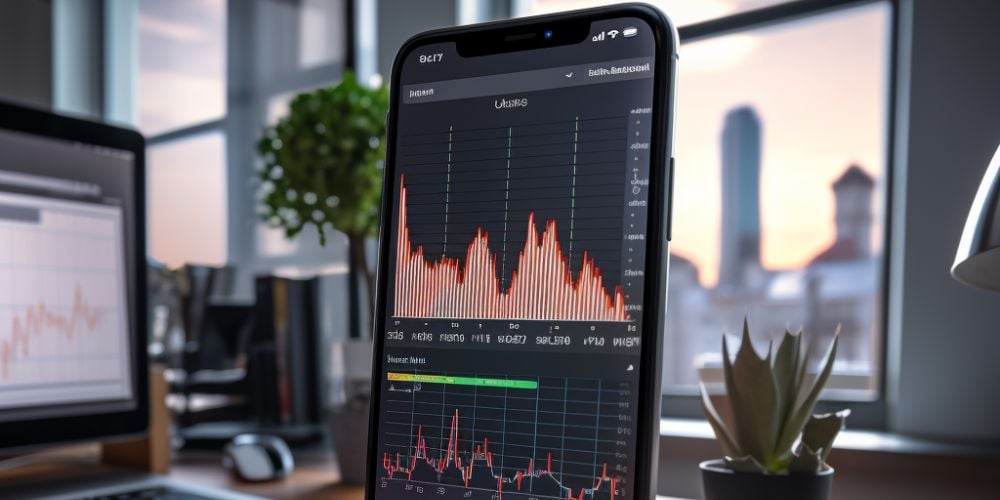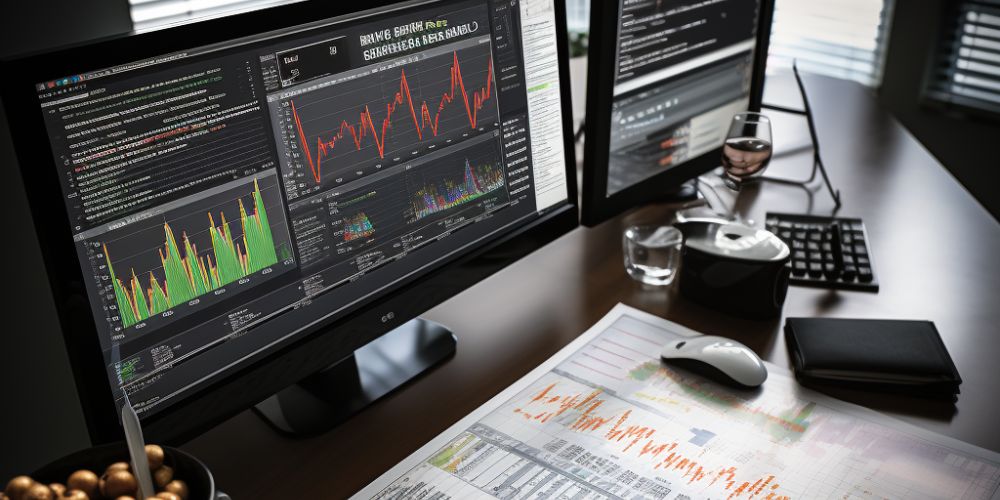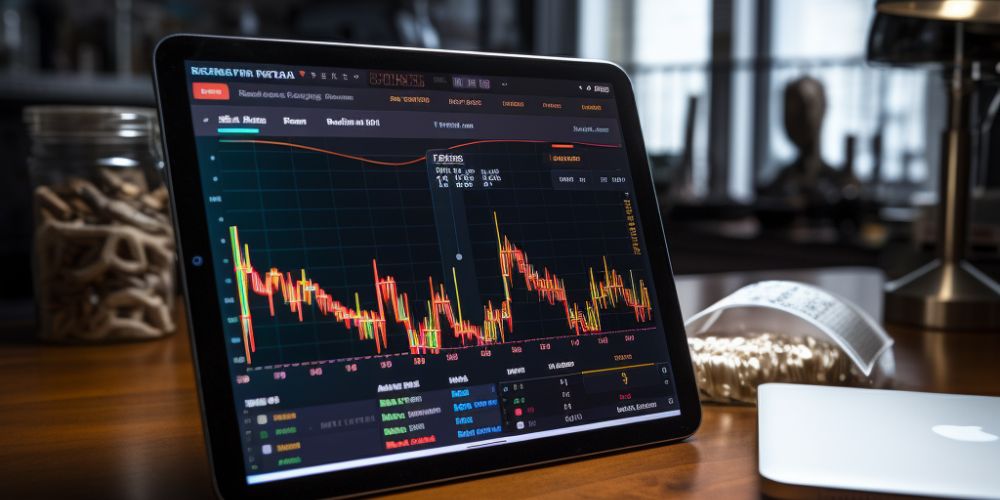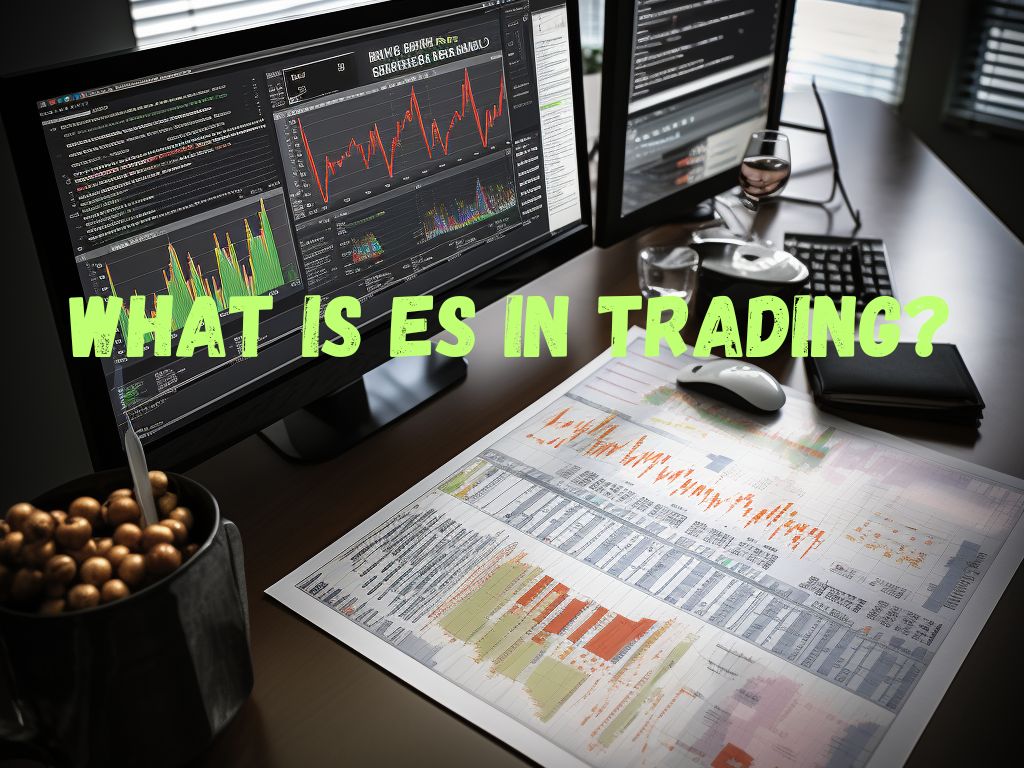In the fast-paced world of trading, staying ahead of the curve is paramount. One key element that has gained prominence in recent years is ES, which stands for E-Mini S&P 500 Futures.
But, what exactly is ES in trading?
This article aims to delve into the intricacies of ES in trading, shedding light on its definition, importance, strategies, tools, and the factors that can impact its performance.
What Is ES in Trading?
E-Mini S&P 500 Futures (ES) is a derivative financial contract that allows traders to speculate on the future value of the S&P 500 Stock Index.
It represents a fraction of the value of the standard S&P 500 Index futures contract, making it more accessible to individual traders.
The contract size for ES is $50 per index point, and the minimum tick size is 0.25 index points.
ES contracts are traded on the Chicago Mercantile Exchange (CME), one of the largest and most liquid futures exchanges in the world.
The ticker symbol for ES is “ES” followed by the expiration month and year, such as ESZ21 for December 2021.
Unlike stock trading, ES contracts are settled in cash upon expiration rather than physical delivery of the underlying assets.

ES Trading Strategies
Trend-Following Strategies:
Traders can employ various techniques to identify and take advantage of trends in the ES market. Moving average crossovers, such as the 50-day and 200-day moving averages, can be used as entry and exit signals.
The Ichimoku Cloud indicator combines multiple components to provide a comprehensive trend analysis, including trend direction and support/resistance levels.
The Parabolic SAR indicator is useful for trailing stop loss orders to capture and ride trends until a reversal occurs.
Breakout Strategies:
Breakout strategies aim to take advantage of price movements when the market surpasses key levels of support or resistance.
Traders can enter trades when price breaks through significant support or resistance levels, indicating a potential trend continuation.
Volatility breakout strategies involve identifying periods of low volatility using indicators like Bollinger Bands and entering trades when volatility expands, expecting a significant price move.
Mean Reversion Strategies:
Mean reversion strategies seek opportunities to profit when the market deviates from its average or equilibrium level, anticipating a return to the mean.
Bollinger Bands can be utilized to identify trade entry points when prices deviate from the bands. The Relative Strength Index (RSI) indicator can indicate overbought or oversold conditions, suggesting a potential reversal in price.

Advanced ES Trading Strategies:
Market Profile Trading:
Market profile trading involves analyzing the market’s structure and identifying price levels that attract volumes. A market profile chart shows the distribution of volume by price across a given time period.
By identifying price levels with the highest volume, traders can anticipate significant support and resistance zones and adjust their trading strategies accordingly.
Order Flow Trading:
Order flow trading is a technique that focuses on analyzing the order flow data, including the number of buy and sell orders, the volume and size of trades, and the order book.
Traders can use this information to determine market sentiment, identify clusters of orders at specific price levels, and anticipate potential market reversals.
Day Trading Strategies:
Day trading strategies aim to capture small price movements within a single trading session.
Scalping involves taking multiple small trades with a small profit, while momentum trading exploits sudden price movements to profit from price breakouts or retracements.
Options Trading:
Traders can use options on ES futures to hedge their positions or take directional trades using strategies such as straddles, strangles, or iron condors.
Options can provide more flexible leverage, more defined risk, and opportunities to profit from time decay or volatility changes.
Algorithmic Trading:
Algorithmic trading involves using computer programs to execute trading strategies based on pre-defined trading rules and parameters.
Algorithmic trading is popular in ES trading due to its high liquidity, fast execution speeds, and ability to process large amounts of market data.
Advanced ES trading strategies require a more advanced skill set, a deep understanding of the market, and sophisticated tools and techniques.
These strategies also involve higher risks and require rigorous risk management to mitigate potential losses.
Traders should consider their goals, risk tolerance, and skill level before attempting advanced ES trading strategies. By combining advanced strategies with sound risk management, traders can achieve their trading objectives.

ES Trading Tools and Resources
To effectively trade ES, traders rely on various tools and resources. These include:
ES Charting and Technical Analysis Tools:
- Moving Averages: Analyze price trends and identify potential market reversals by utilizing moving average indicators.
- Support and Resistance Levels: Determine key levels where buying or selling pressure may intensify, aiding in trade decision-making.
- Candlestick Patterns: Interpret candlestick patterns to evaluate market sentiment and predict potential price reversals.
Risk Management Tools for ES Trading:
- Stop Loss Orders: Implement automatic sell orders to limit potential losses in case the market moves against the trader’s position.
- Position Sizing and Risk-Reward Ratio: Calculate optimal trade sizes and assess the potential reward in relation to the amount of risk taken.
- Trailing Stops: Protect profits by adjusting stop loss orders as the market moves in the trader’s favor.
Factors Affecting ES Trading
Several factors can impact ES trading, including:
Economic Indicators and News Releases:
Economic indicators and news releases can significantly impact ES trading.
Interest rate decisions and monetary policy statements from central banks, such as the Federal Reserve, can influence investor sentiment and market expectations.
Reports on inflation, such as the Consumer Price Index (CPI) and Producer Price Index (PPI), provide insights into price pressures and can affect market volatility.
Earnings reports of major S&P 500 constituents can also impact the overall market sentiment and influence ES trading.
Market Sentiment and External Factors:
The overall sentiment of investors is a crucial factor in ES trading. Market sentiment can be influenced by various external factors, including geopolitical events, economic data, and other market developments.
Increased volatility in other markets, such as the foreign exchange or commodities markets, can spill over and affect ES trading.
Unpredictable events or shocks, like natural disasters, geopolitical conflicts, or unexpected political developments, can significantly impact market stability and ES trading.

Pros and Cons of ES Trading
Before venturing into ES trading, it is essential to consider its pros and cons:
Advantages of ES Trading:
- High Liquidity and Volume: ES offers abundant trading opportunities with deep liquidity, ensuring smooth execution and minimized slippage.
- 24-Hour Trading Availability: With round-the-clock trading sessions, ES provides flexibility for traders across different time zones.
- Potential for Profits in Up or Down Markets: The ability to take both long and short positions empowers traders to profit in rising or falling markets.
Disadvantages of ES Trading:
- Higher Risk and Volatility: ES trading involves inherent risks due to the leverage employed, potential market gaps, and fast-paced price movements.
- Leverage and Margin Requirements: Margin requirements for ES trading can be substantial, requiring careful risk management to avoid potential losses.
- Emotional Challenges: Managing the psychological aspect of trading, such as fear, greed, and discipline, can be a significant challenge for traders.
Frequently Asked Questions (FAQs)
What are the contract specifications of ES futures?
Contract size: $50 per index point
Minimum tick size: 0.25 index points
Trading hours: CME Globex trading hours (Sunday-Friday)
How does ES trading differ from other stock index futures trading?
ES focuses specifically on the S&P 500 Index, while other stock index futures represent different market benchmarks.
Can I trade ES contracts outside of market hours?
Yes, ES futures contracts are available for trading outside of regular market hours on the CME Globex exchange.
What are some popular trading platforms for ES trading?
Examples of widely used trading platforms for ES trading include MetaTrader, thinkorswim, Interactive Brokers, and TradeStation.
How can I manage risk when trading ES?
Practice disciplined risk management by setting stop loss orders, calculating appropriate position sizes, and utilizing trailing stops.
Conclusion
ES, or E-Mini S&P 500 Futures, has emerged as an essential trading instrument, providing traders with opportunities to capitalize on the movements of the S&P 500 Index.
By understanding the dynamics of ES, implementing effective strategies, utilizing the right tools, and managing risk, traders can navigate this exciting market environment and strive for consistent success.
So, delve deeper, explore, and become proficient in trading ES to unlock its vast potential.


 Tags:
Tags:










